TOWARD A NATURE-RICH URBAN FUTURE: Five ways Houston or (insert your city here) could lead the way
Houston is well situated to become a leading city — perhaps the leading city — to envision its future through the unique prism of the natural world. “If you were to say that around here,” one Houstonian said to me recently, “people would say you’re not from around here.” Considering the city’s reputation (no zoning, all business), the statement may sound counterintuitive. So why Houston?
Before speaking at a regional leadership luncheon there, a few months ago, I had learned that Houston’s leaders were considering rebranding the city. Usually, cities work through envisioning groups that focus primarily on economic competition. (Our new Silicon Valley is going to be bigger than your Silicon Valley). But what if Houston (or insert your city’s name here) were to reimagine its future by looking through the prism of nature?
What would its health care and public health systems, education system, residential developments and redevelopment, and shopping areas be like? What about its economic health; its ability to market itself to the most creative people and businesses from around the world? What, then, would the future look like?
Here are five ways Houston — or your city — could create a nature-rich urban future.
1. Incubate future entrepreneurs through the nurture of nature. Houston is known as a city of business, of independent thinkers. New research suggests that more time spent in natural environments, whether incorporated into school grounds or in urban nearby nature or in wilder regions, can reduce the symptoms of attention-deficit disorder, encourage creativity, improve learning and nurture executive function. Entrepreneurs exemplify executive function, which is the ability developed in early childhood — and primarily through imaginative independent play — to be your own boss. (One U.S. study has shown that 7-year-olds today have the executive functioning of 5-year-olds in the 1940s.) Meanwhile, many school districts around the country have cut recess, enforced more sitting time and discouraged independent play.
What if Houston bucked those trends, and added more nature and independent play to the learning lives of children — thereby enhancing the region’s reputation as an incubator of future entrepreneurs?
2. Lead a campaign to reverse the pandemic of inactivity. Houston boasts some of the most sophisticated medical facilities in the world, but also has a high rate of childhood obesity. Harold W. Kohl, a researcher at UTHealth, is one of the leading U.S. voices suggesting that obesity is partially the result of what is now being called the pandemic of inactivity. A top correlate to children’s physical activity “is how much time they spend outdoors,” Kohl has said. In addition to serving as an antidote to obesity, engagement with nature can reduce stress and emotional disorders, as evidenced by the hospitals, mental health centers and nursing homes around the country that are creating healing gardens. Some pediatricians are now prescribing or recommending “green exercise” in parks and other natural settings. What if Houston were to do all of this bigger and better? Imagine adopting the emergent health slogan: Sitting is the new smoking. Houstonian Margaret Lamar and Austin pediatrician Stephen Pont, M.D., also have been thinking about enhanced-health-through-nature experiences.
3. Become the first city to declare itself an engine of biodiversity. Many people within and beyond Houston do not know of the incredible ecological diversity of this urban region. As Houston Wilderness, a collaborative consortium of agencies, research and education centers, conservation organizations, business and economic interests and individuals, has pointed out, “This ecological diversity has been known for decades to experienced bird-watchers and natural scientists, but it has gone largely unrecognized by the general public and our economic leaders.”
What if Houston were to not only celebrate but more aggressively market its distinctive bioregion? Researchers tell us that the parks with the highest biodiversity also are the ones that have the most positive impact on human psychological well-being. The same could be said for whole urban regions.
In the future, our sense of personal and regional identity will depend as much on our bioregion’s natural history as on its human history.
4. Be the leading pioneer city of nature-smart development and new agrarianism. In the 21st century, conservation is no longer enough, we need to “create” nature where we live and work. Decades ago, Houston helped set a standard for planned communities incorporating nature. Could the Houston urban region burnish that image by becoming a seedbed for nature-smart builders, developers and redevelopers, those who specialize in window appeal (the view of nature from inside the home) — not just curb appeal? Nature-smart developers could use local materials to reflect the history of the region, incorporate new designs for natural air conditioning, install super-insulated green roofs that can last 80 years (compared to the normal 20), and weave nature into homes and offices in even the most crowded urban neighborhoods. They might employ biophilic design to increase shopping center sales and transform workplaces into spaces where the presence of nature, inside and out, can increase worker productivity and decrease sick time – as the latest studies have shown to be possible.
Houston and its bioregion could also be a leader of what has been called “the new agrarianism.” By that I mean vertical farms in high-rise buildings, and community gardens, expanded farmers markets, and immigrant agriculture in inner-city neighborhoods. (Researchers at Rice University recently declared Houston the most racially and ethnically diverse city in the nation, which gives it a clear advantage for reaching the goal of assuring that every child experiences the natural world.) Also, at the urban outskirts, innovative ranches and vanguard farms that focus on local sustainable food, fiber, and fuel production. These could all be elements in a dynamic future for the Houston region.
5. While government has a role to play, Houston could play a pivotal role in creating new, non-governmental ways of connecting people to nature. Texas is known for valuing the power of individuals and the broader culture. Within that abiding ethic, and because 95 percent of Texas land is owned by private landowners, the state is poised to create a new norm for human-nature connection through self-replicating tools of change. Among these: family nature clubs and green gyms; a citywide or statewide Natural Teachers network; a new private-sector association of biophilic architects and urban designers; and an informal network of health-enhancing organizations focused on nature.
Houston also could champion a vast, homegrown native park, made of lawns and other private land-holdings replanted by homeowners and other volunteers with native species across inner city and suburban neighborhoods and outward through the piney woods and prairies, thereby reviving butterfly migration routes and building biodiversity, while improving human health and well-being. And, not incidentally, helping create an even more robust economy.
To accomplish all of this, and more, Houston (and probably your city, too) already has the leadership. The Houston region and the state of Texas have been assembling a mix of non-profit organizations, government entities, and private enterprise that envision a nature-rich future. They’re getting results, including the creation of the Sam Houston Trail and the passage of a major parks bond championed by Mayor Annise Parker. In addition, Houston and the rest of Texas have established a large network of groups devoted to getting kids outdoors, including Texas Children in Nature, which recently launched a strategic plan to connect children to nature through cross-sector and bipartisan support. Leaders such as former First Lady Laura Bush have leant their enthusiastic support.
What if leaders put their sights on a goal even more ambitious than energy efficiency? What if they began to imagine, and then make real, a nature-rich city? Such thinking may sound far-fetched, but Texans do like to think big.
What about your city?
-
Network News
POLICY UPDATE: Policy and advocacy for the children and nature movement
-
Voices
Binoculars, bald eagles and my journey as a Black birder
-
Richard Louv
THE WONDER BOWL: Ten Spring and Summer Nature Activities for Kids and Adults
-
Network News
Minneapolis Spotlight: The promise and possibilities of parks for youth
-
Voices
Why nature is my motherhood ally


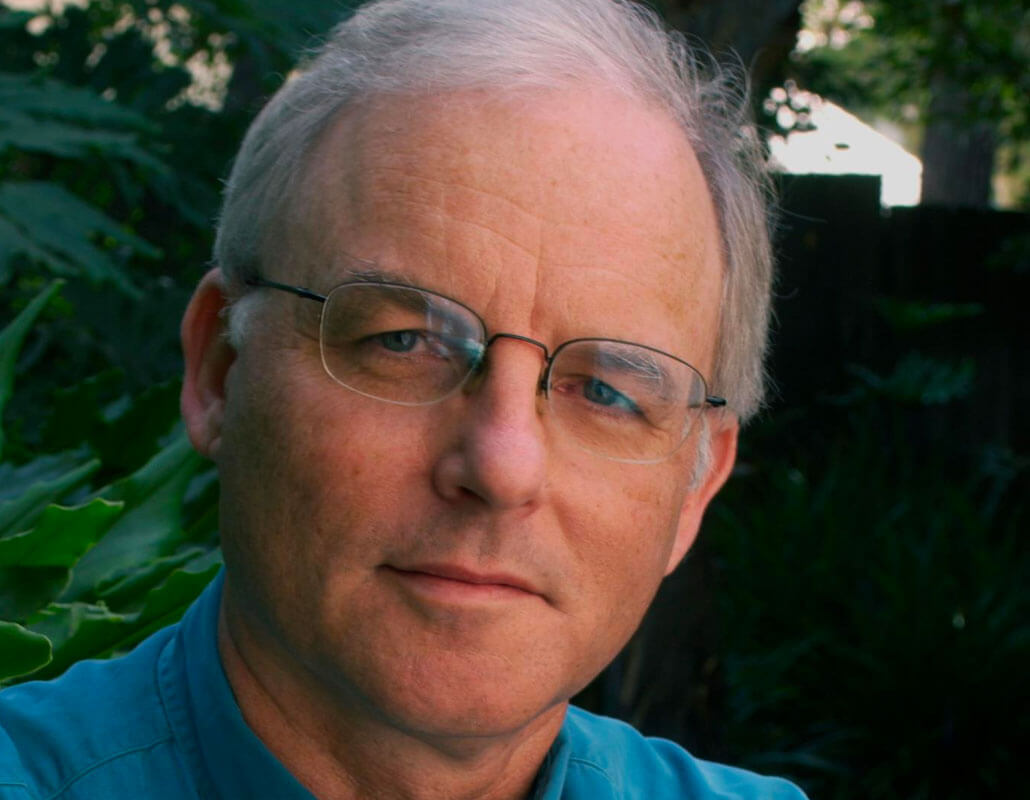
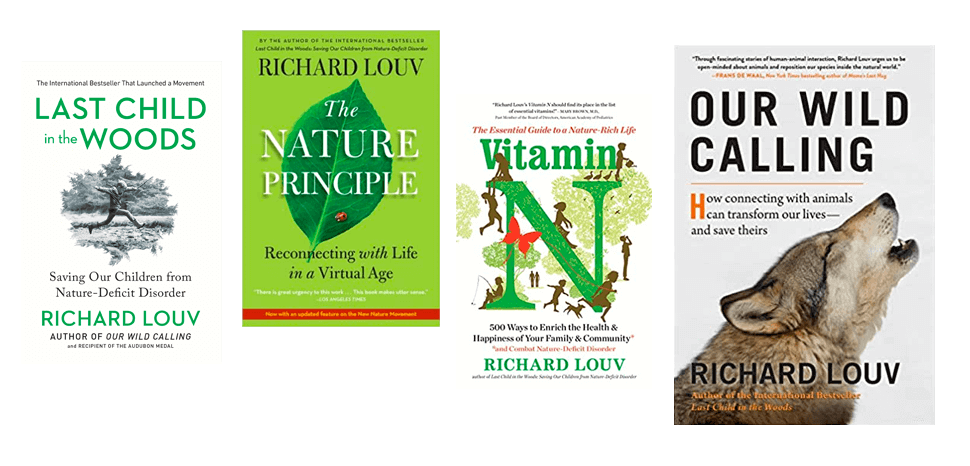
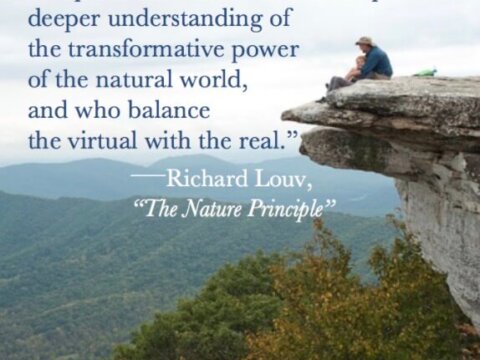
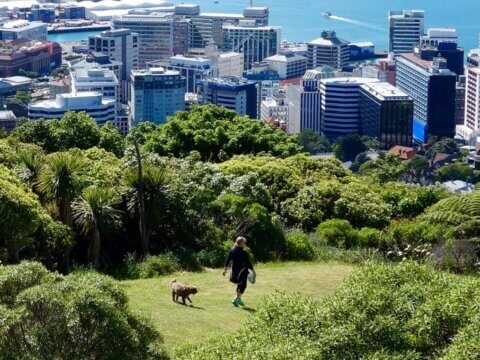
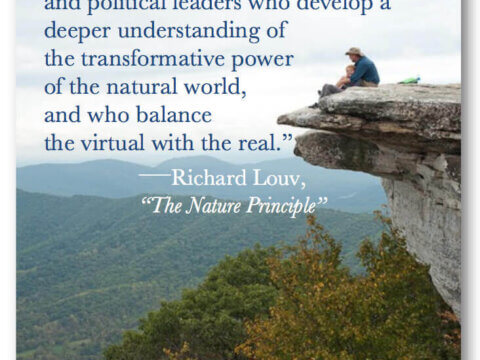
Commentaries on the C&NN website are offered to share diverse points-of-view from the global children and nature movement and to encourage new thinking and debate. The views and opinions expressed are those of the author(s) and do not necessarily reflect the position of C&NN. C&NN does not officially endorse every statement, report or product mentioned.